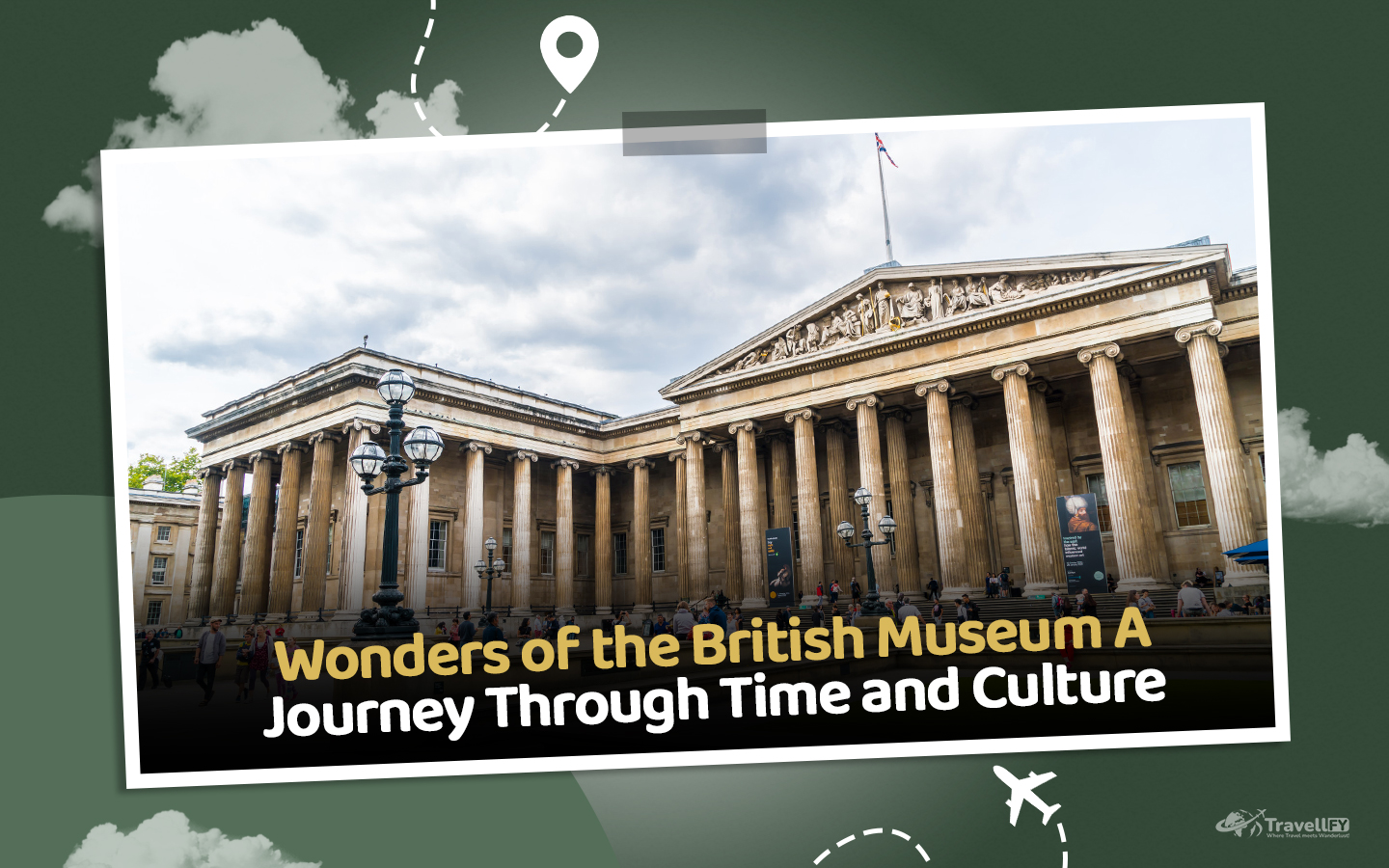The British Museum, located in the heart of London, stands as a testament to human history and culture like no other institution in the world. With a collection that spans over two million years and covers every corner of the globe, the British Museum is a treasure trove of wonders that continue to captivate and educate visitors from all walks of life. In this article, we will embark on a journey through time and culture as we explore some of the most remarkable and awe-inspiring artifacts and exhibits housed within the hallowed halls of the British Museum.
-
The Rosetta Stone
Our journey begins with a visit to the Rosetta Stone, arguably one of the most famous artifacts in the museum’s collection. This slab of black basalt is a key to deciphering the mysteries of ancient Egyptian hieroglyphs. Dating back to 196 BC, the stone contains a decree issued by King Ptolemy V in three scripts: Greek, Demotic, and hieroglyphic. The discovery of the Rosetta Stone in 1799 by a French soldier during Napoleon’s campaign in Egypt was a game-changer for understanding the ancient Egyptian civilization. It enabled scholars to unlock the secrets of hieroglyphs, opening up a wealth of knowledge about ancient Egyptian history, culture, and religion.
-
The Elgin Marbles
Next on our journey are the Elgin Marbles, a collection of classical Greek marble sculptures that once adorned the Parthenon temple in Athens. Lord Elgin removed these sculptures in the early 19th century and later sold them to the British Museum, where they remain today. These exquisite sculptures, depicting scenes from Greek mythology and history, provide invaluable insight into the artistry and cultural achievements of ancient Greece. The controversy surrounding their acquisition, however, continues to spark debate between Greece and the United Kingdom.
-
The Egyptian Mummies
Stepping into the Egyptian mummy room is like traveling back in time to the land of the pharaohs. The British Museum boasts an extensive collection of mummies, coffins, and funerary artifacts from ancient Egypt. Among the most famous is the mummy of Cleopatra, a striking reminder of one of history’s most iconic figures. These well-preserved remains offer a glimpse into the elaborate burial practices and religious beliefs of ancient Egypt, shedding light on the afterlife and the importance of preserving the body for eternity.
-
The Parthenon Frieze
The Parthenon Frieze, another remarkable part of the Elgin Marbles collection, deserves its own spotlight. This intricate and beautifully carved relief sculpture originally adorned the inner walls of the Parthenon temple, depicting the Panathenaic procession, a grand event in ancient Athens. The level of detail and artistry on display here is nothing short of extraordinary. As you gaze upon these stunning depictions of ancient Greek life, you can’t help but marvel at the skill of the sculptors and the richness of Greek culture.
-
The Sutton Hoo Treasure
Our journey takes a turn towards early medieval Europe with a visit to the Sutton Hoo Treasure. Discovered in Suffolk, England, in 1939, the Sutton Hoo burial site contains a wealth of artifacts from the 7th century, including a ship burial with a wooden ship and a treasure trove of Anglo-Saxon jewelry, weapons, and ceremonial objects. The most famous piece from this collection is the Sutton Hoo helmet, an intricately decorated masterpiece that provides invaluable insights into the art and craftsmanship of the early Anglo-Saxons.
-
The Assyrian Lion Hunt Reliefs
Venturing into the ancient Near East, we encounter the Assyrian Lion Hunt Reliefs. These massive stone panels, dating back to the 7th century BC, depict the hunting expeditions of Assyrian kings, where they hunted lions as a symbol of their power and bravery. The level of detail in these reliefs is astonishing, capturing the intensity and drama of the hunts. These reliefs provide a window into the military prowess and grandeur of the Assyrian Empire, one of the dominant forces in the ancient world.
-
The Egyptian Book of the Dead
Another gem within the Egyptian collection is the Book of the Dead, a series of papyrus scrolls containing spells, prayers, and instructions for the deceased’s journey through the afterlife. These ancient texts offer profound insights into Egyptian religious beliefs and the rituals surrounding death and rebirth. The Book of the Dead is not just a collection of words but a guide to navigating the mysteries of the afterlife, making it a fascinating and culturally significant artifact.
-
The Benin Bronzes
Moving to West Africa, we come across the Benin Bronzes, a collection of intricately cast metal sculptures from the Kingdom of Benin (now part of Nigeria). These sculptures are a testament to the advanced artistic and metallurgical skills of the Benin people. The collection includes plaques, masks, and figures that reflect the cultural and historical richness of the Benin Kingdom. The Benin Bronzes, although initially controversially acquired during the colonial era, are now recognized as an essential part of Africa’s cultural heritage.
-
The Lewis Chessmen
Our journey takes us to the medieval world of chess with the Lewis Chessmen, a set of intricately carved chess pieces made from walrus ivory and whale teeth. Discovered on the Isle of Lewis in Scotland, these 12th-century chess pieces provide a delightful glimpse into the pastime of medieval nobility. The intricate craftsmanship of each piece, with their expressive faces and detailed clothing, demonstrates the high level of skill possessed by the artisans of the time.
-
The Moai of Easter Island
Our final stop on this journey brings us to the Pacific Ocean and the enigmatic Moai statues of Easter Island. These massive stone figures, some weighing up to 80 tons, were carved by the Rapa Nui people between the 13th and 16th centuries. The Moai are a testament to the islanders’ ingenuity and determination, as they were transported across the island and erected on ceremonial platforms known as ahu. The British Museum’s collection includes a small but impressive Moai statue, serving as a reminder of the mystery and wonder that surround the history of Easter Island.
Conclusion
The British Museum stands as a living encyclopedia of human history and culture, a place where visitors can embark on a journey through time and across continents. From the Rosetta Stone to the Moai of Easter Island, the museum’s collection offers a glimpse into the incredible achievements, beliefs, and artistry of civilizations throughout history. While these ten wonders represent just a fraction of the treasures housed within its walls, they serve as a testament to the enduring fascination and importance of the British Museum in preserving and sharing the story of humanity. So, if you ever find yourself in London, be sure to take a journey through time and culture at the British Museum, where the wonders of the world await your discovery.




